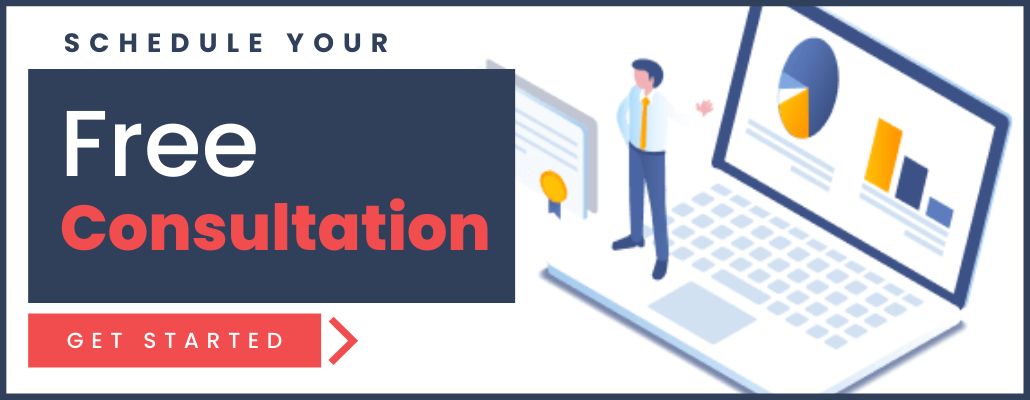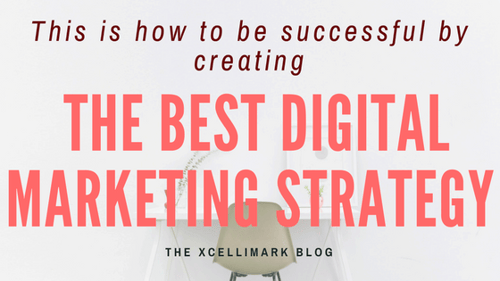Why Your Company Can’t Afford to Rely Solely on Word of Mouth for Lead Generation

 Word of mouth can do wonders for your business. We’ve heard it all before – happy customers are what generates referrals. After all, what’s stronger social proof than someone raving about the company that helped solve all their problems?
Word of mouth can do wonders for your business. We’ve heard it all before – happy customers are what generates referrals. After all, what’s stronger social proof than someone raving about the company that helped solve all their problems?
But is word of mouth enough to generate the right leads and create sales?
There are many advantages to word of mouth marketing. People place more trust in recommendations from people they know as opposed to a random company. In addition, word of mouth is free and needs no upkeep on your end. You don’t have to strategize or do anything different than normal as long as what you are normally doing is helping to create positive word of mouth referrals.
Sounds great, right?
However, there’s also a weakness associated with relying solely on word of mouth that you need to consider before you give up on creating additional marketing strategies.
>> Learn how your digital marketing strategy
stacks up against your competitors.
Get Your Competitive Analysis! <<
Word of mouth is hard to control – which means you can’t promote particular items, sales, or even target a type of customer. You can hope your customers pass on positive information about your company, but there’s not much you can do about it without setting up a system to help your customers share their experience. (And if you’re doing all that work, are you really saving yourself any time or money?)
So if you are still relying solely on word of mouth to generate leads and sales for your business, you could be giving your business the short end of the stick without even realizing it. With the amount of time that needs to be invested to generate one lead, you simply can’t be sure that word of mouth is going to consistently find people in the right stage of the buyer’s journey.
Don’t worry – we’re not saying word of mouth is a bad thing. But since it’s hard to control, it may be time to consider adding another tactic or two to your sales strategies and plans.
Why Inbound Marketing Can Increase Your Lead Generation – And Sales
How do you address the marketing gaps that word of mouth is not filling? Two words: inbound marketing.
Simply put, inbound marketing is about drawing in the right type of clients by providing them with the right information and resources they need to solve their problem. (Don’t worry – you’re still the one helping them with their problem.)
It also allows you to create a lead generation strategy that builds a relationship with potential clients – instead of simply hoping they call.
So, don’t fret! With inbound marketing, you can balance out the short-comings of word of mouth to create a strategy that works best for your company’s sales and lead generation.
Here are just a few of the ways that inbound marketing can help your sales and lead generation processes.
Start Speaking to The Right Audience
While it’s wonderful that your clients are talking about you, you can’t exactly control who they speak to. If they’re coming across your perfect buyer persona on a regular basis, then it’s probably a great thing. But what if they’re not?
As we mentioned above, inbound marketing is about attracting the right buyers. It’s also focused on speaking to an audience that has a problem you can solve.
With word of mouth, who knows if the people hearing about you actually have a need for you? Inbound marketing connects you to potential clients who are actively looking for a solution to their problems.
Nurture Relationships with Leads
People rarely make a purchase the first time they hear about you – especially not in today’s day and age. Instead they research and read reviews to really decide which company is the most trustworthy to invest in.
In fact, 80% of sales will happen after at least five touch points.
It’s hard to create touch points with leads who are only touching base with your clients – and not you. How do you build a relationship without actually interacting with someone?
It’s easier than it sounds. Imagine your perfect client shows up on your blog from a search engine. At the bottom of the post there’s a call-to-action leading them to download a quick checklist on the same topic. They sign up to receive it and now they’re subscribed to your newsletter and are part of an automated email workflow. Next, they receive a set of emails that talk more about the same topic they’re interested in. These emails direct them to other blog posts, opt-ins, and finally a bottom of the funnel offer such as a free trial or demo where you can show that your company is the one that can solve their problem.
On top of the email workflow, other things to nurture the relationship and keep your company in the front of their mind occur, such as regularly receiving your newsletter in their inbox. It won’t be long before they see you as a trusted expert in the field – and someone who can help them solve their problems.
Announce Your Promotions
You spend a lot of time thinking up the perfect promotion – one that will connect with your buyer personas, while making them feel like they can’t pass up the opportunity to do business with you. But promotions only work if people know about them.
Is it likely that your clients will tell people about each and every promotion you do?
Unfortunately, no – and to rely on this sales method would require you to make sure your clients are constantly informed about all your promotions, even the ones that may not apply to them.
Target Peak Times – And Slow Seasons
Does your business ebb and flow? Most businesses aren’t hitting consistent numbers from month to month. If you’re relying solely on word of mouth, your slow season may continue to crawl.
But what would your sales growth look like if you could emerge from that slow season?
On the other hand, you’ll also want to prepare for peak seasons so that customers are fully aware of your offerings and any seasonal promotions. During the time of the year when consumers are spending the most, you want to reach as many people as possible, all in a short timeframe. You’ll want to reach beyond your (and your client’s) network.
Good news travels fast – but does it travel fast enough to make your sales promotion a success?
If Not Word of Mouth, What Lead Generation Tactics Should You Choose?
Instead of considering just word of mouth, think instead about how a referral system that leads prospective clients into a relationship with you can transform your sales numbers. If you believe all you need is word of mouth, you’ll be amazed at how adding another strategy can help grow your company.
Even if you want to stick to the premise of word of mouth, try today’s updated inbound version of it: social media. On social media platforms such as Facebook and Twitter, when one person shares their review, there’s a possibility it will be seen by thousands of people. And if someone recommendeds you to their followers, you can step in to form a relationship with them immediately without waiting for them to decide whether to come to you or not. Social media encompasses all of the pros of word of mouth marketing with the extra benefits of an inbound strategy.
Go ahead – give inbound marketing a try. The best part? With inbound marketing, you have data to measure. You can determine what methods are working, which aren’t, and alter them to create optimum results for each part of your lead generation strategy.
Try doing that with word of mouth.








